History
Our baked goods stand for enjoyment and love of life. For Generations the sweet pleasure of biscuits has been associated with the Bahlsen name. The unmistakable taste, the consistently high quality and trust in the product have made Bahlsen what it is today: a successful and modern family company. The company owes this strong position to a history going back more than 130 years.
Company’s foundation
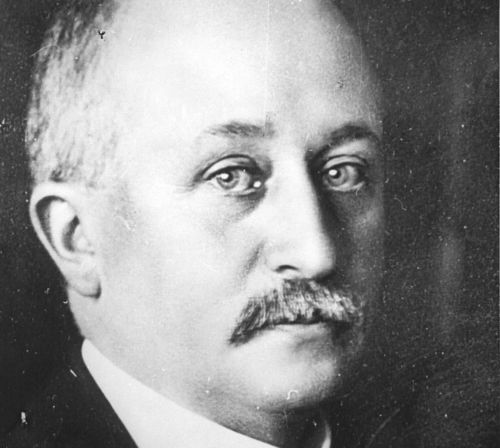
The company was founded on 1 July as Hermann Bahlsen (1859–1919) takes over the “Fabrikgeschäft engl. Cakes und Biscuits” company on Friesenstrasse in Hannover from H. Schmuckler and renames it “Hannoversche Cakesfabrik H. Bahlsen”.
1889Birth of the LEIBNIZ Cakes
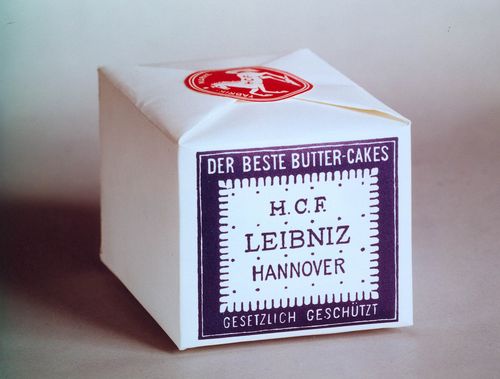
Hermann Bahlsen introduces the LEIBNIZ Cakes onto the market. As it is common practice to name food products after public figures, Hermann Bahlsen names his cakes after Hanover’s well known inhabitant: Gottfried Wilhelm Leibniz (1646-1716).
1891Gold medal at the Chicago World’s Fair.
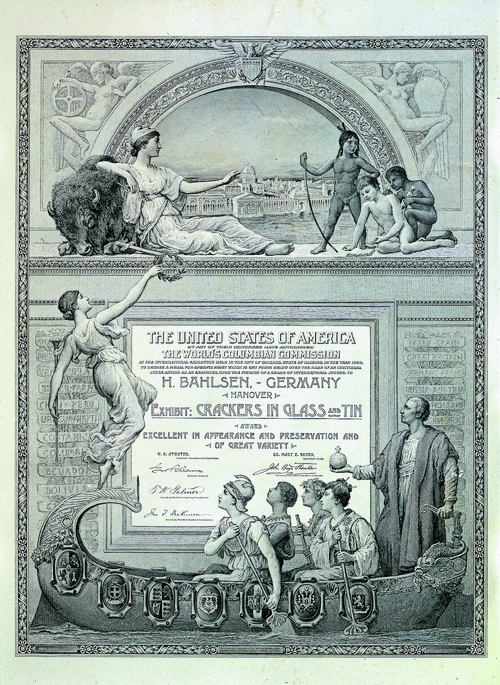
The company employs 100 staff members. At the world exhibition in Chicago, Bahlsen receives the gold medal for the “LEIBNIZ Cakes”. The official reason stated by the jury: “Several competitors imitate the LEIBNIZ Cakes in one or another way; but only Bahlsen captures the fine taste of butter.”
1893Lower Saxony-Horse becomes Official Logo
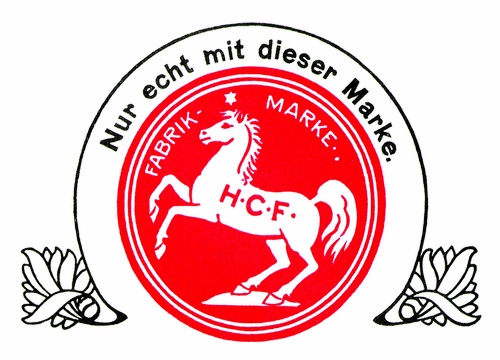
The prancing Lower Saxony-Horse is registered as the company trade mark. A distribution warehouse follows the new office in Berlin in 1898. By 1914 there are innovative sample stores in every major German city.
1896Luminous Advertising for LEIBNIZ Cakes
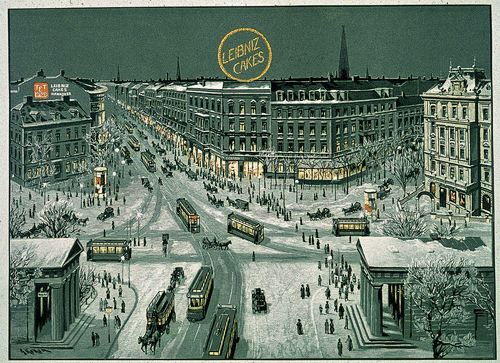
Germany’s second neon sign advertisement proclaims LEIBNIZ Cakes above Potsdamer Platz in Berlin.
1898Next gold medal
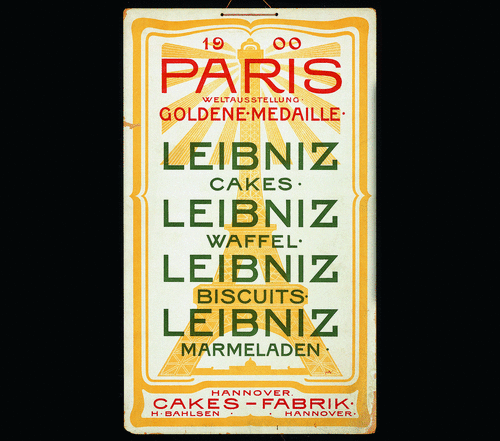
Bahlsen is again awarded a gold medal at the Exposition Universelle in Paris for its “specialities”.
1900Introducing the TET-Packaging
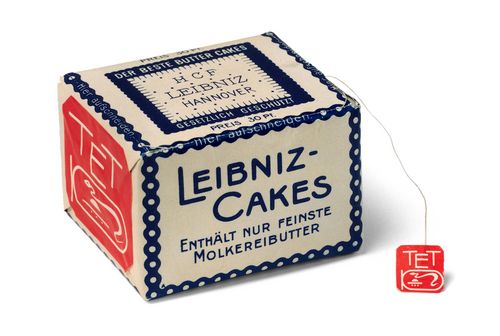
The new dust and moisture-resistant TET packaging is introduced onto the market. The TET sign, featuring an oval with a snake and three dots deriving from an ancient Egypt hieroglyphic meaning ‘everlasting’, is originally pronounced as “dschet”, but simplified to “TET”. The TET-packaging is the first packaging made of paper-board with the ability to keep the biscuit enduringly fresh.
1904First Assembly Line in Europe
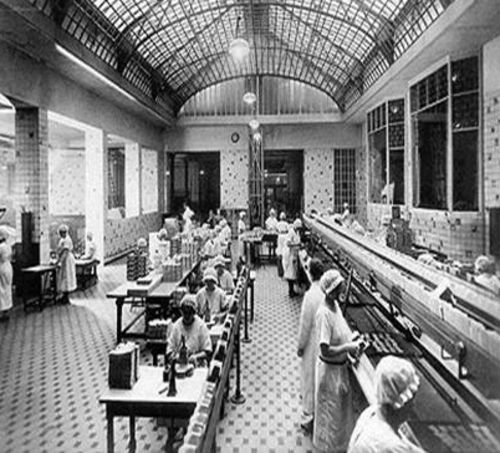
Besides the first punch card, Bahlsen introduces Europe's first assembly line, eight years before Henry Ford adopts it in the automotive industry.
1905New products
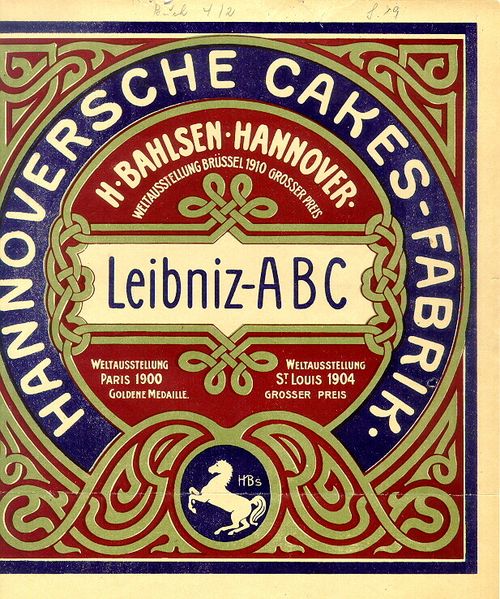
The products „NOCH EINE“ ice waffle and „ABC“ are introduced onto the market, helping the company on its upward surge.
1906Year of Change
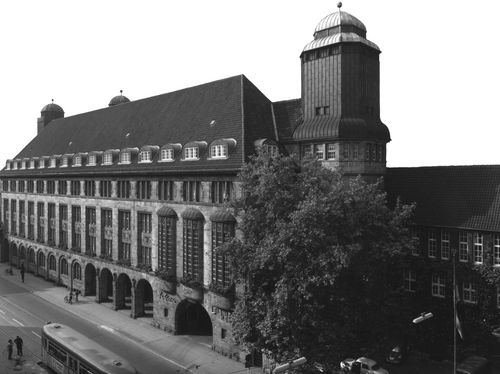
Hermann Bahlsen changes the English word „cakes“ into „Keks“. Some years later, the new term is officially approved and incorporated in the German Duden [dictionary]. The company moves into the new factory building in Lister Straße and the new headquarters in Podbielskistraße. Pictures, sculptures, and ornaments create a pleasant working environment. Several social institutions arise.
1911From Cakesfabrik to Keksfabrik
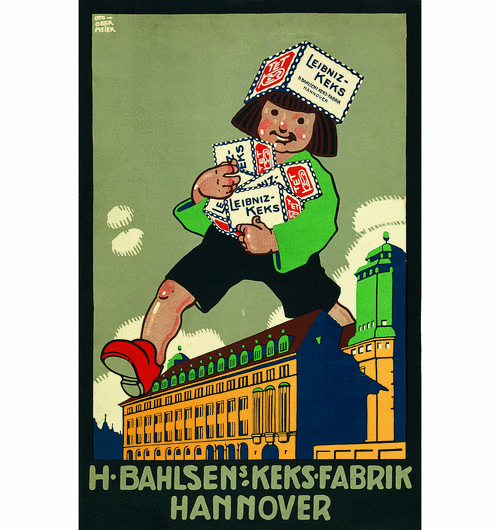
The company is renamed “H. BAHLSENs Keksfabrik”. Twelve million “TET packages” are sold. The in-house employee newspaper “LEIBNIZ BUTTERBLÄTTER” is published for the first time.
1912Model of the TET-City
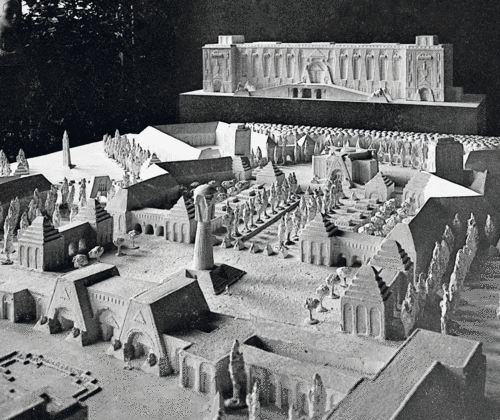
The model for a large factory including residences in Hannover, the so-called “TET City”, is presented. The further course of the war prohibits the implementation of the plans made by Bernhard Hoetger.
1917Shortage of Raw Materials by the End of the War
By the end of the war the lack of raw materials almost completely disrupts production. Only one of the 25 ovens is operational.
1918Sorrow and Emulation
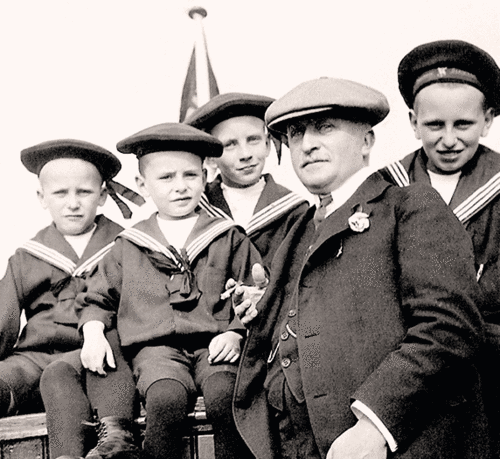
Hermann Bahlsen dies on 6 November 1919. He is succeeded by three of his four sons; 1919 Hans Bahlsen (1901–1959), 1922 Werner Bahlsen (1904–1985) and 1930 Klaus Bahlsen (1908–1991). Together with a young management team, the second Bahlsen generation starts restructuring and modernising the company after the economic decline that had resulted from inflation and the Great Depression.
1919Bahlsen during National Socialism
In July 2019, Bahlsen hired Professor Dr. Manfred Grieger to independently investigate into the company's role during the Nazi dictatorship. The first interim results are now available. [Find more information here.]
1933 to 1945Outbreak of World War II
The Second World War breaks out two months after Bahlsen celebrates its 50th anniversary. Food products are rationed and raw materials are short. Biscuits are only sold against bread stamps. Many employees are conscripted into the German army. The technical office must discontinue its research and development work. The assortment of products is reduced to eleven products while emergency rations for the army and crisp bread are added.
1939Reconstruction after the War
By the end of the war nearly 60% of the factory and almost all distribution warehouses are destroyed. On April 24th, the allies grant a permit to restart work.
1945High Quality Standards
In order to ensure high quality standards, Bahlsen establishes its own physical and chemical laboratories. Furthermore, Bahlsen is one of the first German companies to be issued an export licence. The first foreign shipment goes to Switzerland.
1950Export to the USA
Under the direction of Werner Bahlsen the company starts exporting products to the USA.
1952First “stiff thermoplastic package”
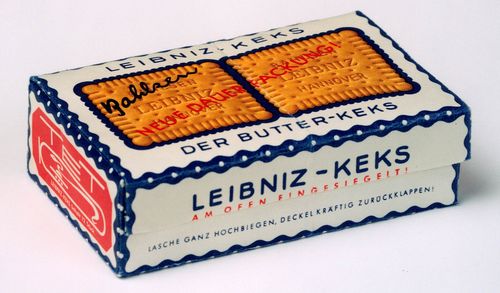
Hermann Bahlsen (1927–2014), the son of Hans Bahlsen, joins the company, opening up the era of the third generation. At the same time Bahlsen introduces the first air-tight and waterproof package, the so-called “stiff thermoplastic package” – a welded aluminium foil – onto the market, setting new standards regarding freshness and extended shelf-life. By now Bahlsen is exporting to 74 countries.
1956Opening of plant in Barsinghausen
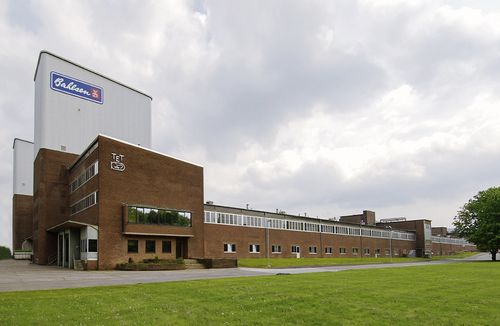
The Barsinghausen plant, the Europe’s most modern production site, is inaugurated.
1959Bahlsen becomes International

Foundation of the first Bahlsen sales companies in France and Italy. Austria and other countries follow.
1960Opening of plant in Varel
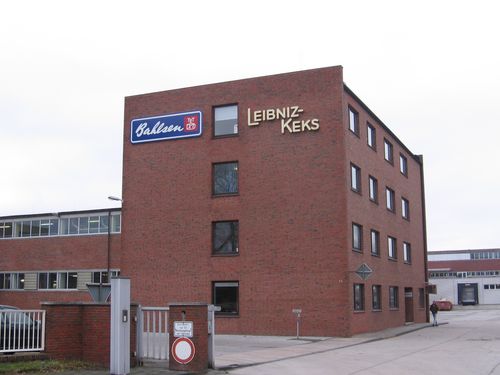
Productions begins at the Varel plant in Friesland.
1963Beginning of the Snack Business
Bahlsen introduces Peanut Flips onto the German market and expands its snack assortment in a cooperation with the Flessner Company in Neu-Isenburg.
1964Bahlsen bakes Cakes
Bahlsen enters the cake business by taking over the Brokat Bakery in Oldenburg. By now Bahlsen employs 7,000 staff members in total.
1966Opening of plant in Berlin
The Berlin production plant goes into operation. Bahlsen of North America is founded as well as the affiliated companies in Luxembourg and the Netherlands.
1967Foundation of „Bahlsen Belgium“

With four employees, the distribution company in Belgium is founded. Initially, the company focusses on Brussels as the main area of distribution. Later on the distribution expands with country wide delivery.
1969Further Company Foundations

Bahlsen Spain and Bahlsen UK are founded.
1972New administration centre

The new administrative centre in Hannover is opened at the site where TET City was originally supposed to be built.
1974The Third Generation: Werner M. Bahlsen joins the company
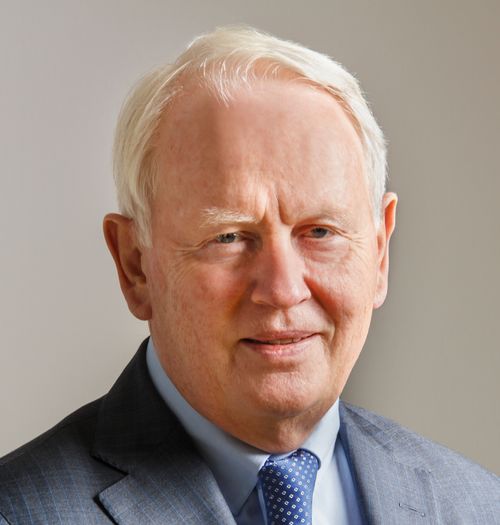
Werner M. Bahlsen, Werner Bahlsen’s youngest son, joins the company. His brother Lorenz Bahlsen already joined in 1973.
1975Production in the USA

Production in the United States begins with the acquisition of Austin Quality Foods in North Carolina. Bahlsen employs approximately 11,200 members of staff.
1980Outsourcing of the Production
Due to shortage of space, production in the headquarters in Hannover, the oldest factory of the company, is outsourced to plant in Barsinghausen.
1987100 years of Bahlsen
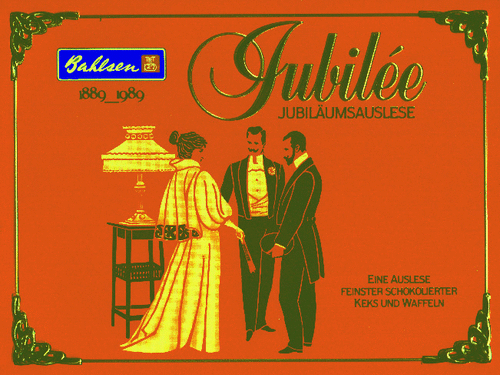
Bahlsen celebrates its 100th Birthday.
1989New Distribution Warehouse
The new distribution warehouse in Langenhagen, near Hanover, comes into service. More than 100 employees ensue smooth-running logistics. Furthermore, Bahlsen acquires the Polish company “Unimarex”. At a later date, the company is renamed to “Poznan”.
1992Bahlsen expands to Poland
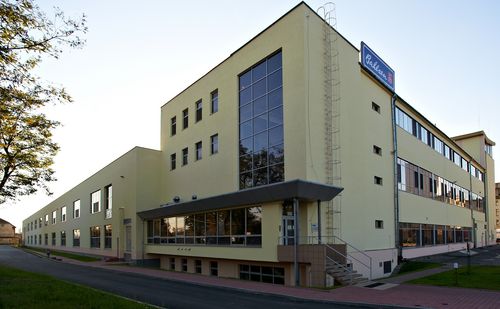
Bahlsen acquires the Skawina food company in Poland with its approximately 1,100 employees.
1993Acquisition of a Traditional Company
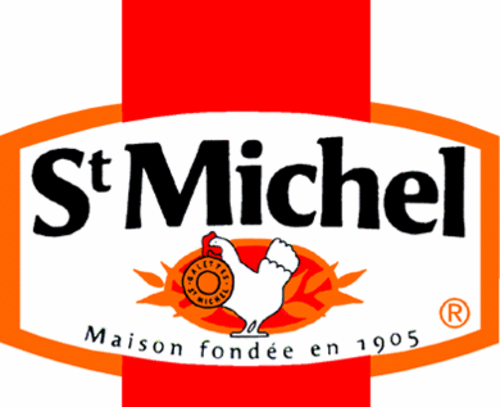
Acquisition of St. Michel (France) - a biscuit producing family enterprise with more than 90 years standing. St. Michel continues to be the national brand for Breton biscuits and cakes.
1994New Name and Acquisition
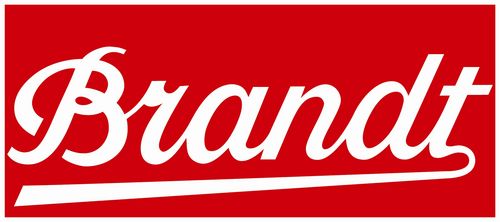
The “H. Bahlsens Keksfabrik KG” changes its name to “Bahlsen KG”. Acquisition of shares from the Brandt Company as well as from the Gottena subsidiary.
1995Redirection of the Company
Hermann Bahlsen leaves the company and takes over all shares of the former subsidiary “Austin Quality Foods“, Cary /North Carolina.
1996Introducing PiCK UP!
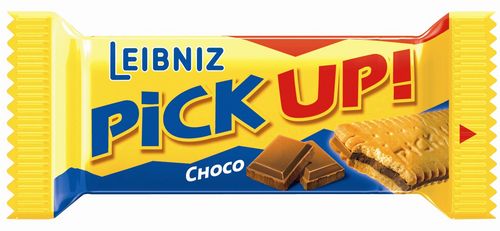
Bahlsen launches PiCK UP! in Germany, Austria and France, successfully entering the snack bar market.
1999The Origin of Three New Incorporations

The company is split off into the “sweet” (Bahlsen) and “snack” (Lorenz) segments and the Von Nordeck Group.
Bahlsen faces up to its moral responsibility
Bahlsen joins the “Foundation Initiative for the Compensation of Former Enforced Labourers during the Second World War”.
Old Head-Office as New Headquarters

The original headquarters in Podbielskistraße 11 once again becomes the new headquarters. Extensive reconstruction turns the traditional building - that is under a preservation order - into a modern office building.
2000Cakes from Varel
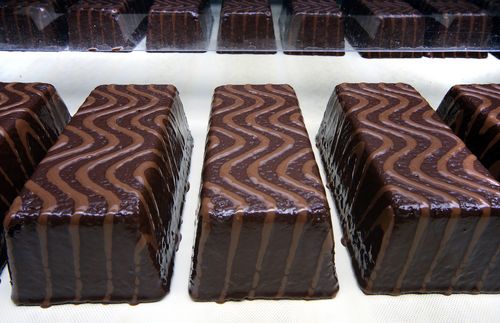
Bahlsen relocates cake production from its factory in Oldenburg to the nearby production plant in Varel. The newly integrated production facility for cakes enables innovation in technology.
2005Plant in Barsinghausen wins “Factory of the Year” prize
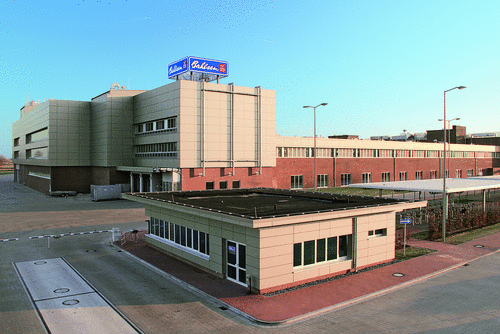
After wide-ranging modernisation work, the Barsinghausen plant is awarded the “Factory of the Year” prize. The “Factory of the Year” is an annual benchmarking event known as the toughest benchmarking test for manufacturing companies throughout Europe.
2011Robbery of the Golden Biscuit
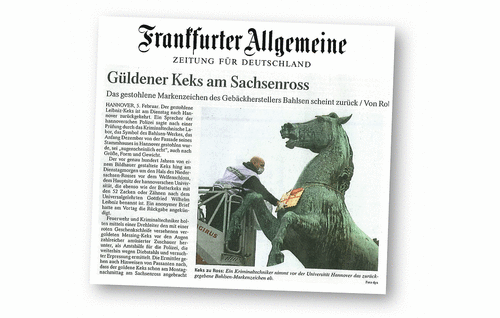
Unknown thieves steal the Golden Biscuit from the Pretzel Men sculpture on the façade of the company's headquarters in Hannover, attracting the attention of newspapers and television stations around the world.
2013Celebrating of the company’s 125th birthday
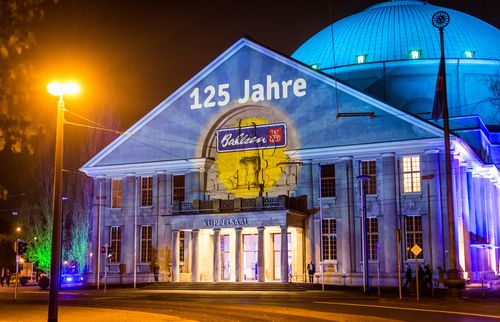
On 1 July 2014 Bahlsen becomes 125 years old. In October 2014, the anniversary is celebrated officially. For the first time in the history of the company, all 2,500 employees from around the world are invited to Hannover.
2014125 years of LEIBNIZ butter biscuits

LEIBNIZ butter biscuits celebrates its 125th anniversary – one of the world’s oldest branded products.
2016Investment in Rawbite
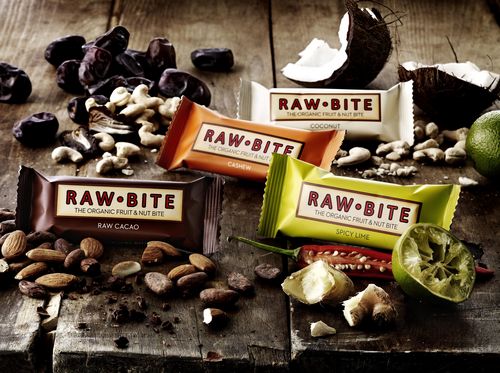
The international Bahlsen Group has acquired a majority of Rawbite ApS, the Danish organic food brand and producer of organic fruit and nut bars.
2016Werner M. Bahlsen withdraws from the Management Board to join the Governance Board
Werner M. Bahlsen withdraws from the Management Board to head the newly founded Governance Board of the Bahlsen Group. The members of the Management Board, lead jointly future company operations. For the first time in recent Bahlsen history, no member of the Bahlsen family is on the Management Board. The Governance Board is responsible for the long-term strategic alignment of the Bahlsen Group.
2018New corporate design "The Bahlsen Family"
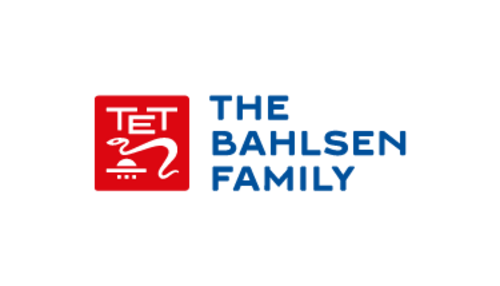
In May 2018, the Bahlsen Group introduces its new corporate design as a visible expression of its corporate identity. At the heart of the new design is the "The Bahlsen Family" logo: The new logo features the traditional TET character that has been retrieved and a specially developed font.
Bahlsen Group enters into a partnership with food start-up incubator KITCHENTOWN

Bahlsen cooperates with the food start-up incubator KITCHENTOWN from Silicon Valley. KITCHENTOWN provides start-ups with production areas with various technical facilities for the development of products. In cooperation with Bahlsen, the business model is now to be established in Berlin. www.kitchentown.de
Bahlsen works on the role of the company at the time of National Socialism
In 2019 Bahlsen assigns historian Professor Dr. Manfred Grieger to examine an independent review of the company's history. The investigation is to be completed by mid 2023 and a final report will be available.
Sale of Schneverdingen plant
As part of the strategic alignment of the Bisquiva business and the product range of the Bahlsen Group, Bahlsen sold the Schneverdingen plant to Heidekeks GmbH on November 1, 2019. Heidekeks GmbH is a subsidiary of the Hans Freitag Group in Verden. The Bahlsen Group also has production facilities in Barsinghausen, Berlin and Varel (all in Germany) as well as in Skawina and Jawornik (both in Poland).
2019Generational Change
Werner M. Bahlsen hands over the company to the next generation. Johannes and Andreas Bahlsen become members of the Governance Board, Verena Bahlsen represents the fourth generation in the company as active shareholder. She works closely together with the Management Board. At the same time, Phil Rumbol becomes the new CEO of Bahlsen. This is the first time that a non-family manager takes over the leadership of the Company.
2020Bahlsen brand with new logo and design
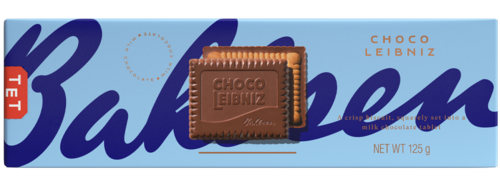
The Bahlsen brand is changing the design of its packaging as part of a global relaunch. The new look puts the brand at the center of attention and anchors it more firmly in design again: modern, classic and unmistakable. Design elements that have made Bahlsen famous are used: the blue lettering and the TET logo.
2021LEIBNIZ is shining with brand relaunch
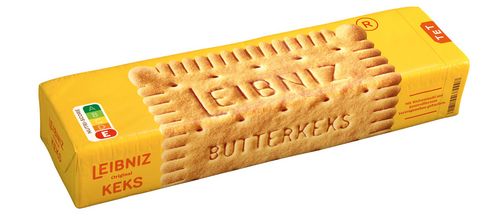
The traditional brand proudly presents itself in a new design. Along with this, LEIBNIZ is integrating Nutri Scores in many countries for the first time. It can be seen on all LEIBNIZ products. At the same time, LEIBNIZ is launching "Fruits", a product with Nutri Score A, on the market.
2022